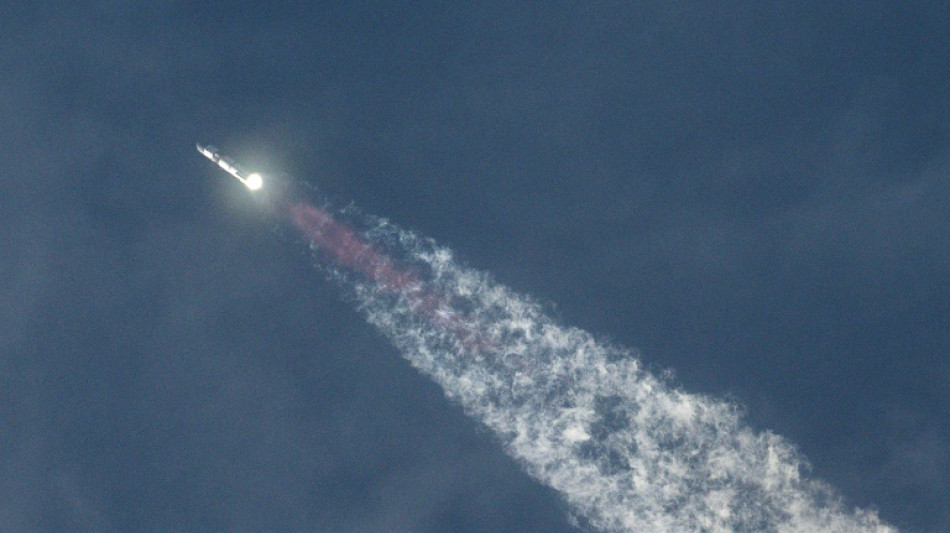
SpaceX mega rocket Starship's next launch on June 5

Starship, the world's most powerful rocket, is set for its next test flight on June 5, SpaceX announced on Friday.
The launch window from the company's Starbase in Boca Chica, Texas opens at 7:00 am local time (1200 GMT), pending regulatory approval.
It will be the fourth test for the sleek mega rocket, which is vital to NASA's plans for landing astronauts on the Moon later this decade, and to SpaceX CEO Elon Musk's hopes of eventually colonizing Mars.
Three previous attempts have ended in the Starship's destruction, all part of what the company says is an acceptable cost in its rapid trial-and-error approach to development.
"The fourth flight test turns our focus from achieving orbit to demonstrating the ability to return and reuse Starship and Super Heavy," SpaceX said in a statement.
Super Heavy is the booster, while Starship refers to both the upper stage and the two stages combined.
The flight path will be similar to the third test, which took place in March and saw Starship fly halfway around the globe before it was eventually lost as it re-entered the atmosphere over the Indian Ocean.
This time around, SpaceX hopes to achieve a soft splashdown for the booster stage in the Gulf of Mexico, and a "controlled entry" for the upper stage.
Designed to eventually be fully reusable, Starship stands 397 feet (121 meters) tall with both stages combined -- 90 feet taller than the Statue of Liberty.
Its Super Heavy booster produces 16.7 million pounds (74.3 Meganewtons) of thrust, almost double that of the world's second most powerful rocket, NASA's Space Launch System -- though the latter is now certified, while Starship is still a prototype.
SpaceX's strategy of carrying out tests in the real world rather than in labs has paid off in the past.
Its Falcon 9 rockets have come to be workhorses for NASA and the commercial sector, its Dragon capsule sends astronauts and cargo to the International Space Station, and its Starlink internet satellite constellation now covers dozens of countries.
But the clock is ticking for SpaceX to be ready for NASA's planned return of astronauts to the Moon in 2026, using a modified Starship as the lander vehicle.
M.Jacobucci--PV
